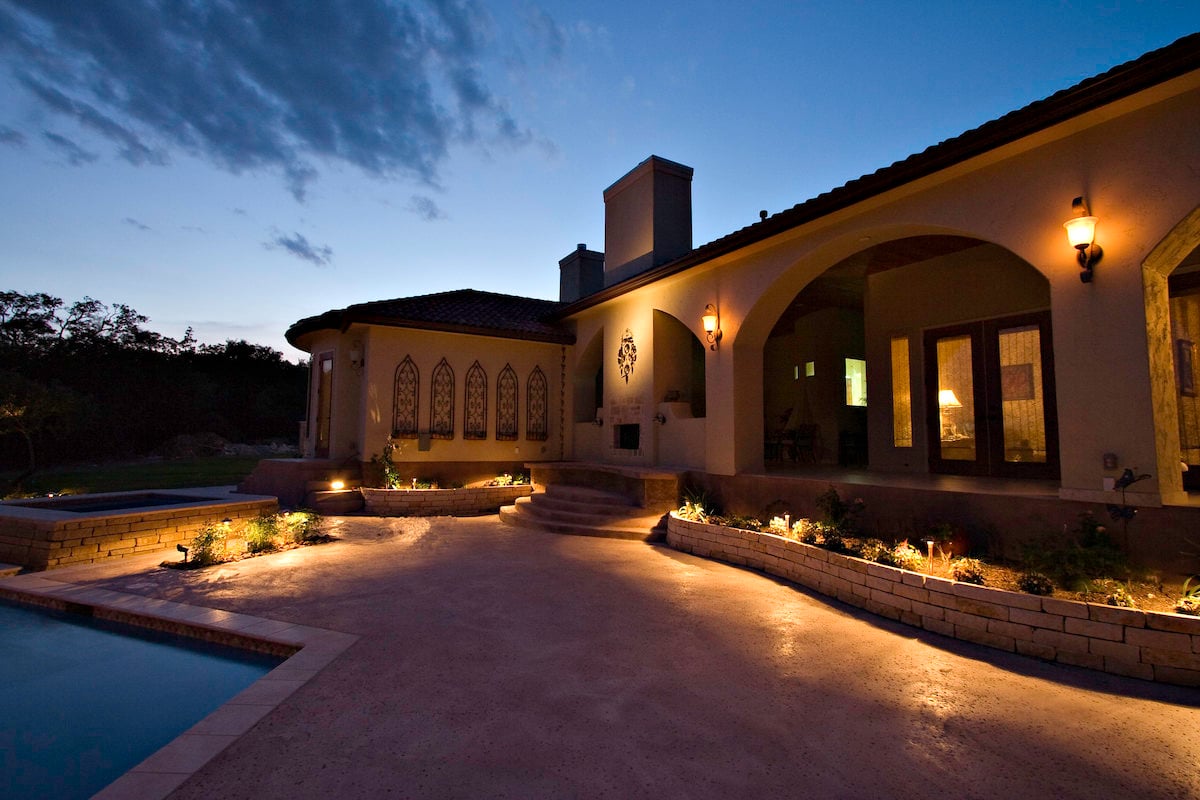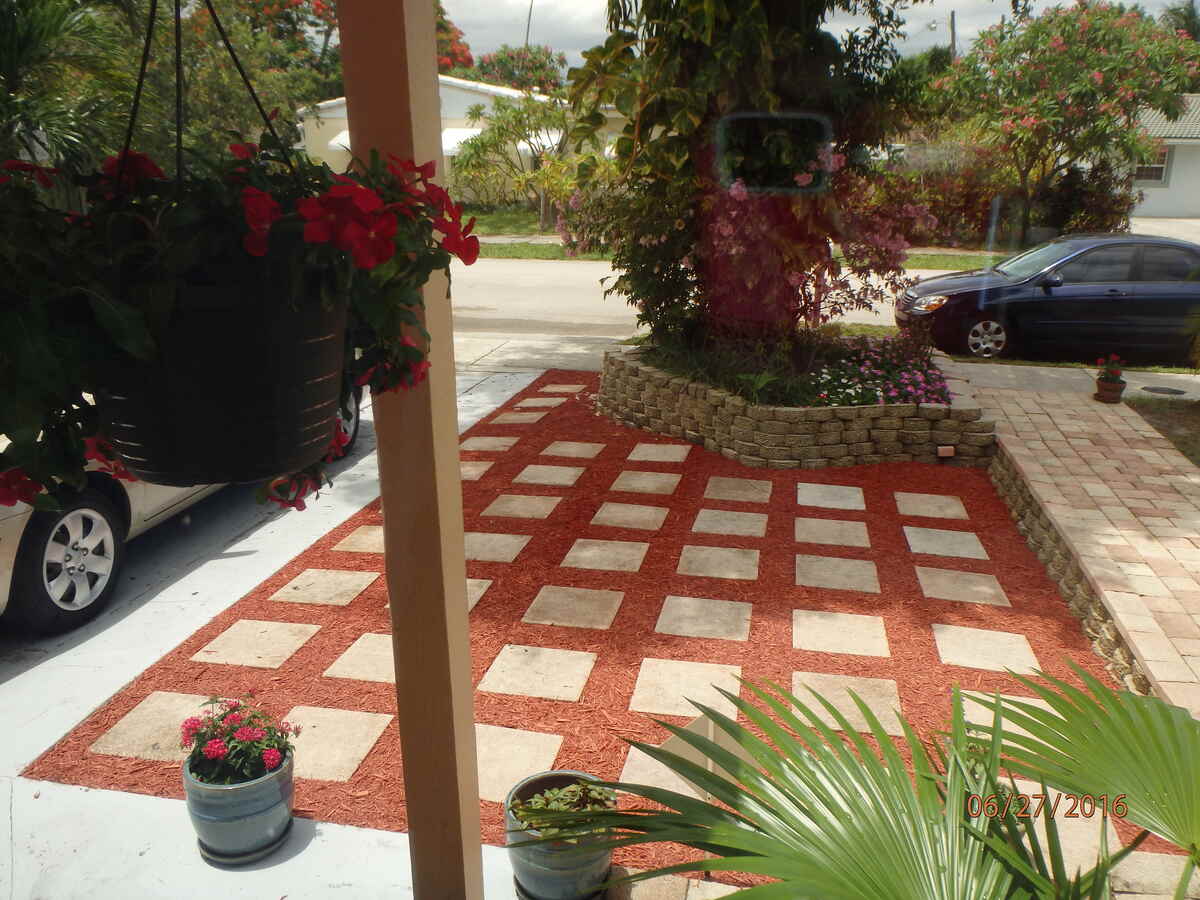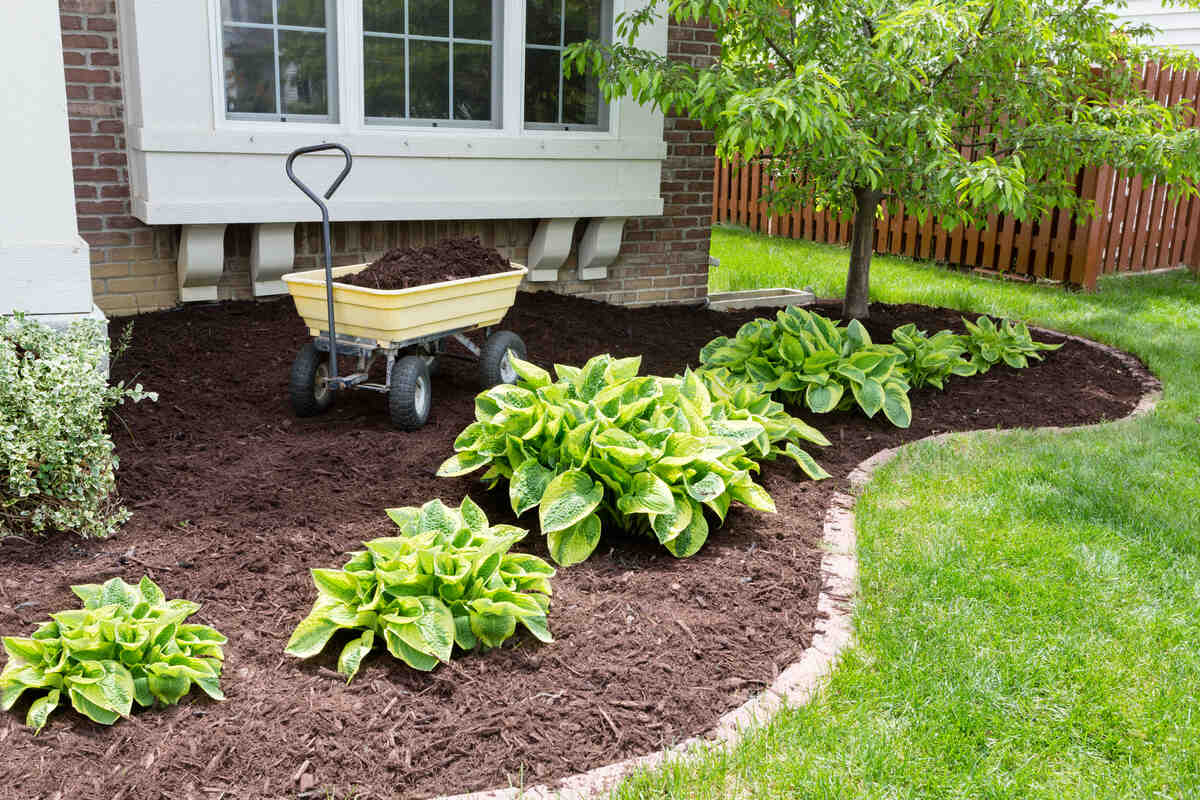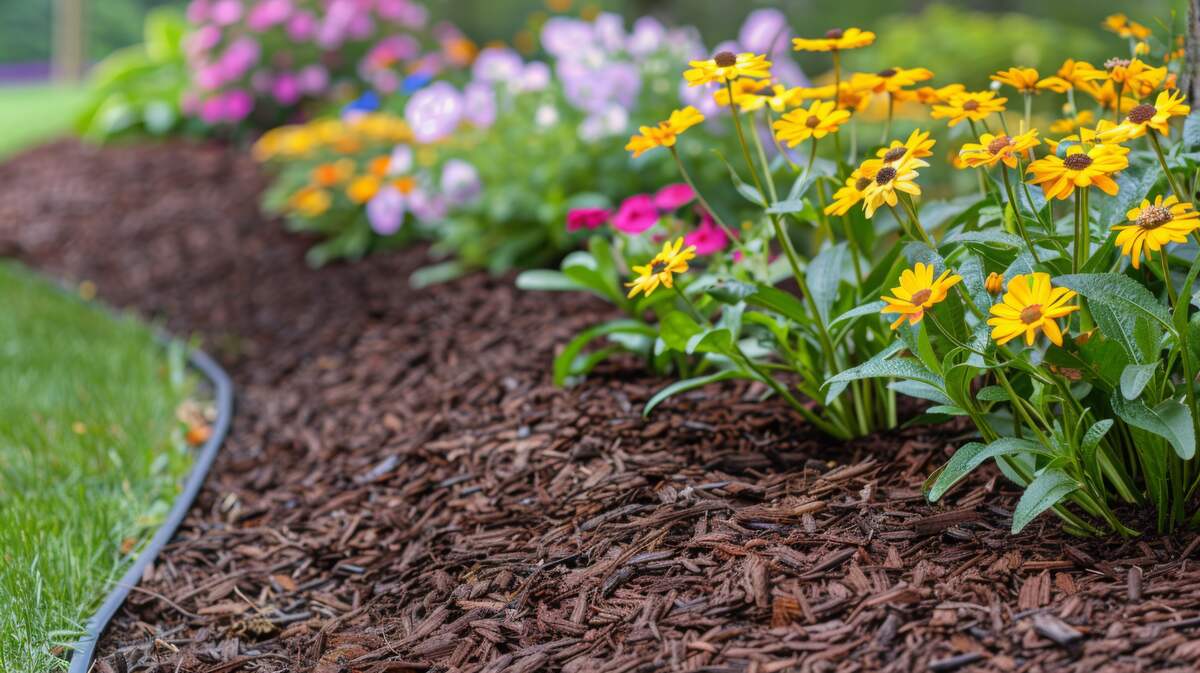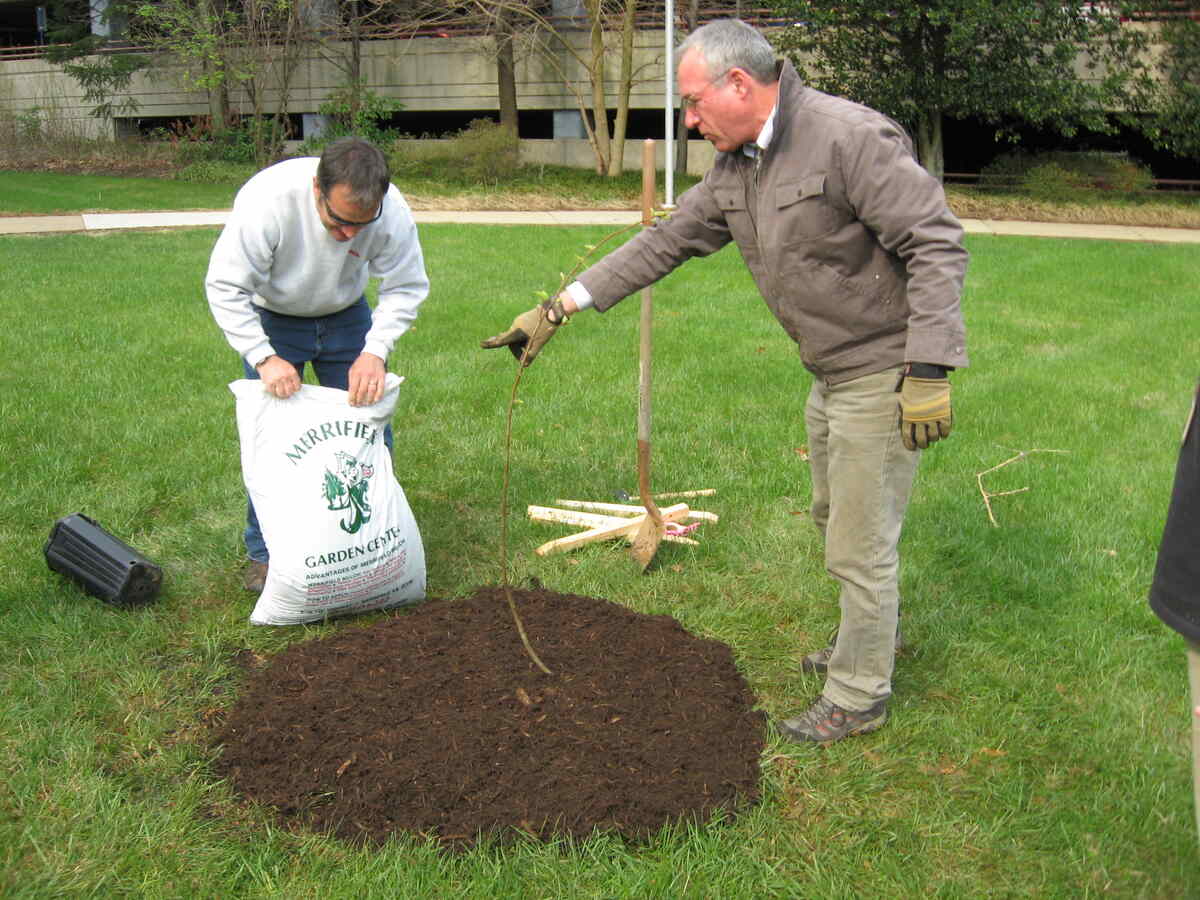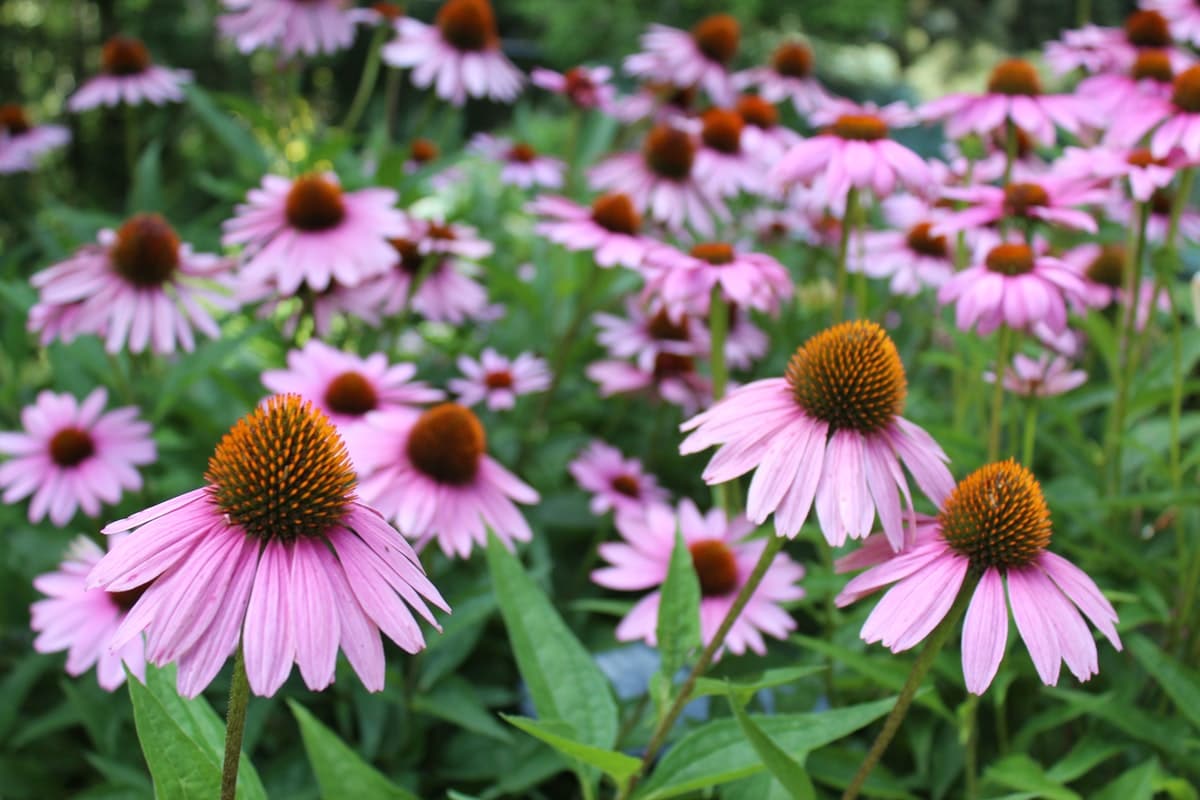
You don’t have to spend all your green to improve your home’s curb appeal. Beautiful landscapes may look expensive, but an eye-popping yard can be budget-friendly, too. These 20 cheap landscaping ideas to improve your yard will inspire you.
Recycle an old watering can, lay down free mulch, or hang some string lights, and you can create a charming, cozy yard at little to no cost. If you’re crafty and good with tools, you’ll whiz through our selection of cheap DIY landscaping ideas for your yard. So, don’t raid your savings account, but do grab your sun hat, slip on those garden boots, and get started.
- 20 Cheap Landscaping Ideas
- 1. Add a Walkway
- 2. Save With Perennials
- 3. Spread Some Mulch
- 4. Plant Flowers Around Your Mailbox
- 5. Plant a Tree Sapling
- 6. Raise Your Garden Bed
- 7. Repurpose Items as Planters
- 8. Landscape with Lighting
- 9. Hang Some Window Boxes
- 10. Use Edging to Add Some Order
- 11. Grow an Edible Garden
- 12. Add Texture With Beach Pebbles
- 13. Show Off Your Landscape With Outdoor Dining
- 14. Rock Your Rock Garden
- 15. Cool Off in an Above-Ground Pool
- 16. Grow up With a Vertical Garden
- 17. Sit a Spell on a Bench
- 18. Light The Way With Lanterns
- 19. Invite The Neighbors With a Birdbath
- 20. Repurpose Old Watering Cans
- FAQ
20 Cheap Landscaping Ideas
1. Add a Walkway
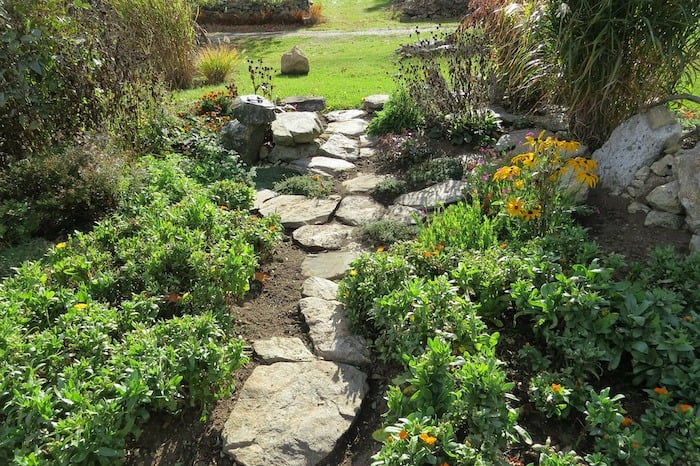
Add a xeriscaping element to your yard: Stepping stones or pavers make excellent budget-friendly walkways. They draw the eyes to areas of the yard you wish to show off, and they invite your visitors to do a little exploring. Pathways also help keep people from walking on the grass and provide a sense of direction from one part of the yard to another.
Spruce your stones up with soft moss or plants, and you’ll have yourself an affordable, elegant walkway.
Cost: Pavers and stepping stones typically range from $1 to $15 each, and they can be bought at your local home improvement store. And here’s a pro tip: If you have some pavers left, check out our fire pit ideas to warm up your outdoor space.
2. Save With Perennials

Plant perennials, which return with color every growing season. This saves you money and gardening time because you won’t be buying and planting new annuals every year. Examples of perennials include tulips, asters, hostas, daylilies, hydrangeas, lavender, and coneflowers.
While perennials may have a higher initial cost than annuals, perennials will save you more green in the long run.
Cost: $10 to $30 (or more) for a perennial plant.
3. Spread Some Mulch
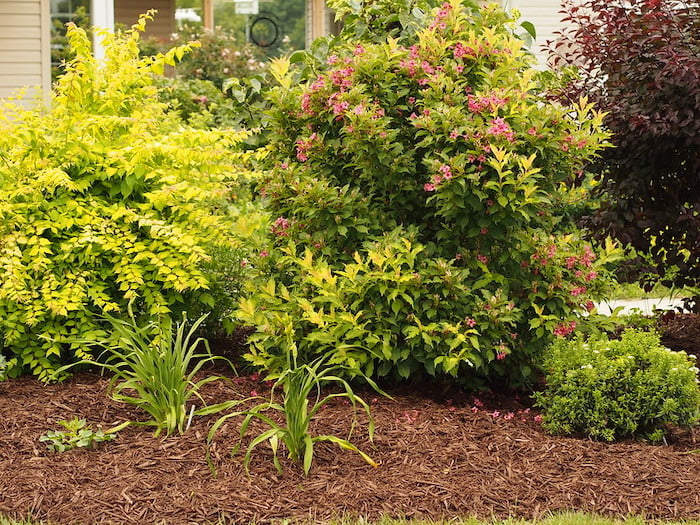
Mulch is just what you need to make your flower beds pop. It adds a textured ground cover to your flower beds and helps keep out those pesky weeds that keep stealing the show.
Mulch also helps lock in moisture, and organic mulches can add nutrients back into the soil to enhance plant health. This inexpensive landscaping idea will not only help your plants grow but also make your flowers a stunning attraction.
Cost: Free mulch — wood chips, grass clippings, leaves, compost, pine needles, and straw — can be found in your neighborhood. Or you could buy your mulch. Mulch costs vary according to the material. On average, homeowners spend between $17 to $68 per cubic yard or $2 to $5.50 per bag. But for a cheap backyard landscaping idea, you can’t beat free.
4. Plant Flowers Around Your Mailbox
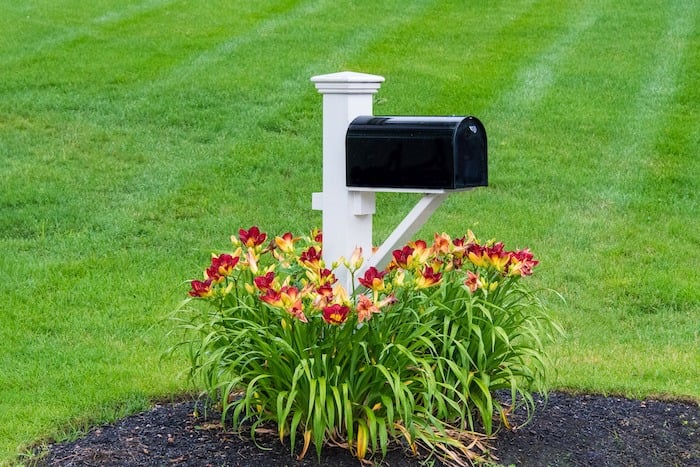
When you’re giving directions to your home, wouldn’t it feel good to say, “Mine is the one with the pretty mailbox.” No one will be able to miss your driveway when you surround your mailbox with a flower bed or a small trellis with self-climbers like climbing hydrangeas or roses.
Cost: One perennial plant from a nursery typically will cost between $10 and $30.
5. Plant a Tree Sapling
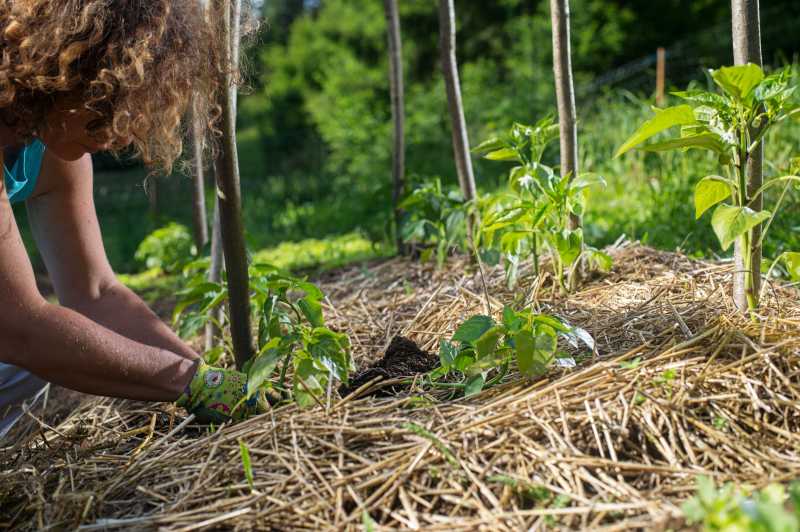
If you like saving your green, plant a small sapling and you may see your tree increase your home’s value when it comes time to sell.
Saplings, strategically placed, can grow into giant trees that can help reduce home energy costs. Deciduous trees may provide enough shade over your home to reduce air conditioning costs, while evergreens may lower heat costs by blocking cold winter winds.
Cost: Planting a small tree costs around $85, while a large tree may run you into the thousands.
6. Raise Your Garden Bed
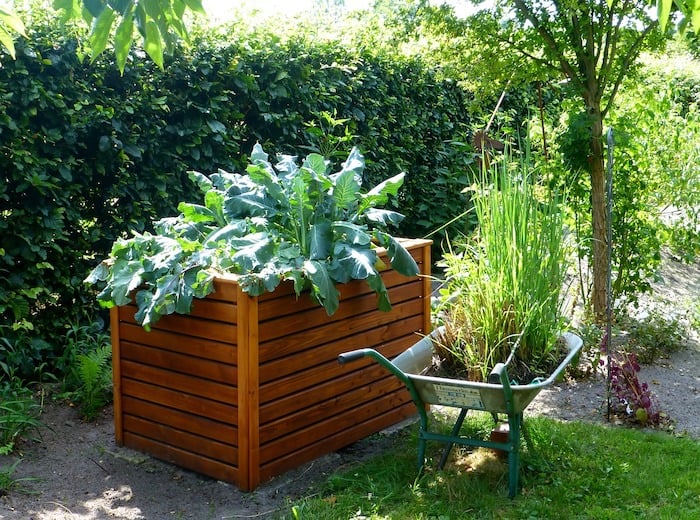
A raised garden keeps nuisance weeds at bay, prevents soil compaction, provides excellent drainage, and protects your plants from pests. Raised flower or vegetable beds also add an aesthetically pleasing value to your garden.
A raised garden bed can be made with many materials, including wood, cinder block, or brick.
Cost: Check out how you can make a simple DIY raised garden bed with just $35.
7. Repurpose Items as Planters
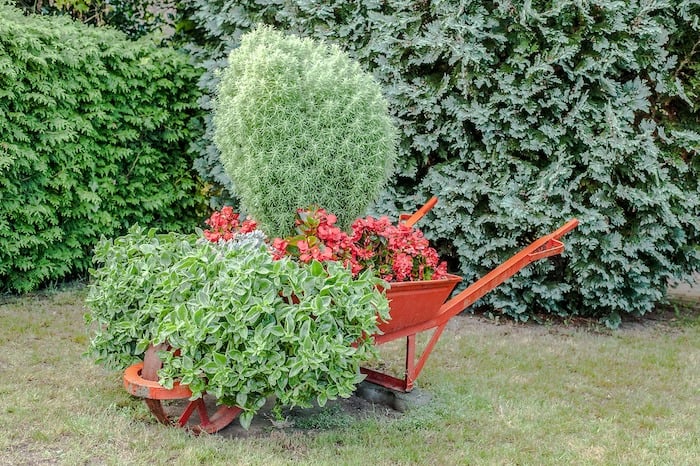
Repurpose that old barrel, tub, piano, or wheelbarrow into an eye-catching focal point full of plants. You’ll get in A+ in recycling and likely have a one-of-a-kind creation in your front yard.
Don’t repurpose an old toilet into a planter, though. That’s not going to get the kind of attention you want from friends, family and neighbors.
Cost: Since you’ll be building a flower bed inside of an item you already have, you’ll only need to buy flowers, which may run you $10 to $30 per plant.
8. Landscape with Lighting
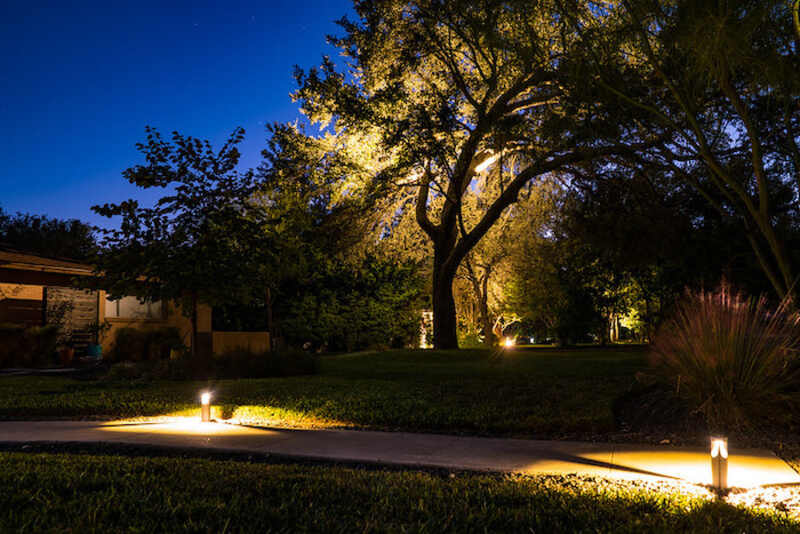
This landscaping hack will make your lawn shine: Outdoor string lights can transform your entire yard into an enchanted space after the sun goes down.
Never had dinner outside because it was always too dark? Well, hang luminescent string lights around your backyard dining area, and you’ll have both a gorgeous evening landscape and a delicious meal.
Cost: When it comes to landscape lighting costs, outdoor string lights are the most affordable, around $80 per string if you buy enough for a large area. Pathway lights are also on the cheaper side, costing between $50 to $150 per installed fixture.
Or head to a dollar store, outlet stores like Big Lots or Ollie’s, or even the seasonal aisle of your grocery store for cheaper prices on outdoor string lights.
9. Hang Some Window Boxes
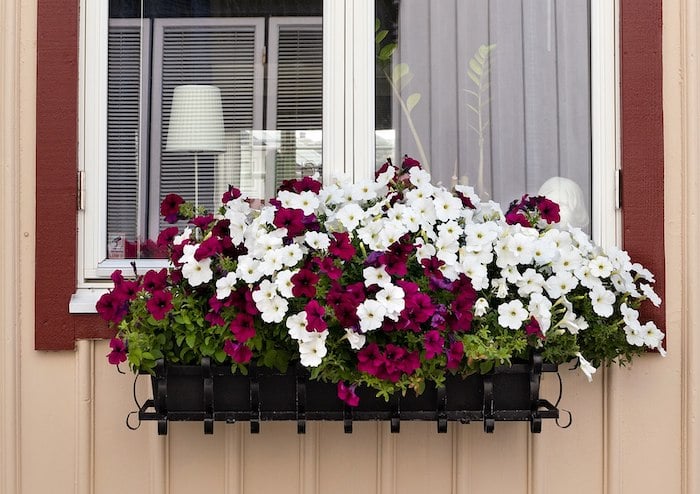
Are your front windows looking a little tired? Install window boxes to add instant charm and color to your front lawn while also covering up any wear and tear. Window boxes are simple, beautiful, and can be a great DIY landscaping project. Window boxes also give you an exceptional view of your favorite flower right from inside.
Cost: A window box is the perfect DIY project if you’ve got wood lumber, screws, and brackets lying around in the garage. Otherwise, an 8-foot piece of wood lumber may cost you between $5 and $20. Keep in mind that plants typically cost between $10 and $30 each.
If you’d prefer to buy a window box instead of build one, window boxes cost between $15 and $100 depending on the style and quality.
10. Use Edging to Add Some Order
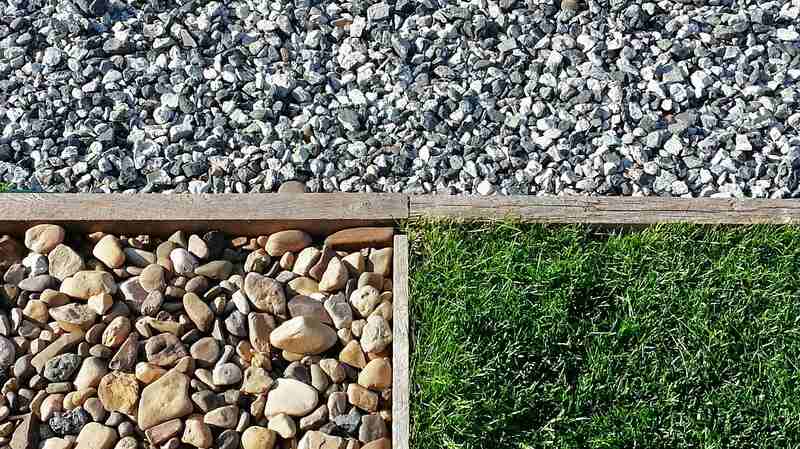
If you’re landscaping on a budget, sometimes the best money-saving technique is to enhance what you already have. Is your favorite tree looking a little forgotten, or is the mulch in your flower beds getting all over the lawn?
Consider giving your trees, shrubs, and flower beds a makeover with some edging. Edging helps to keep your mulch in place, prevent erosion, and make your landscape stand out.
Edging materials include stone, concrete, brick, wood, metal, logs, and recyclable items.
Cost: Professional landscape curbing installation, or edging, can cost between $4 to $11 per linear foot, depending both on the material and how much edging you will need. But to keep that piggy bank on the shelf, spare stones on your lawn or extra wood from the tool shed can make excellent materials for your flower bed’s edging.
11. Grow an Edible Garden
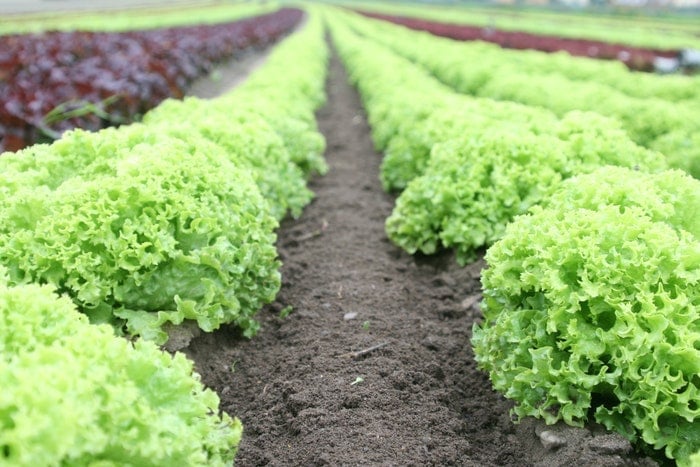
An edible garden can cut your grocery bill because you will be eating what you grow instead of buying those fruits and vegetables in store. While a cost-effective garden may take time and energy to maintain, a good harvest will have you reaping the rewards.
Cost: You can buy your garden’s seeds for as little as $2 a pack. Establishment costs will vary depending on the garden’s size, whether you decide to install a fence, and whether you choose to build a raised garden bed. Keep in mind that while you may have to pay upfront to establish your garden, it will begin to pay for itself as you grow your fruits and vegetables.
12. Add Texture With Beach Pebbles
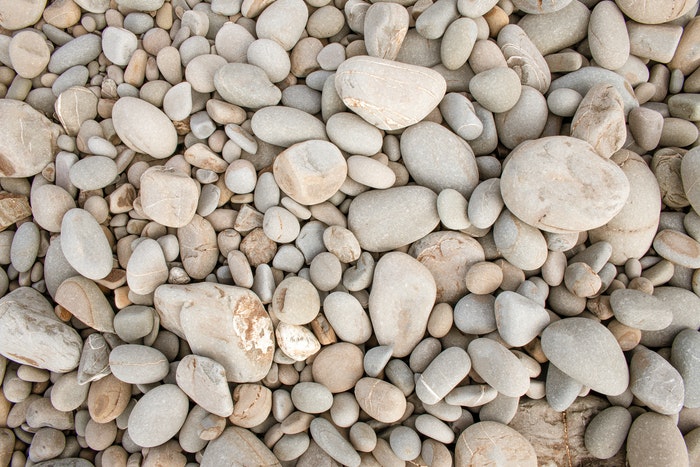
You’ll love your rock garden of pebbles when you see how much they can do and how little they cost. Fill in the crevices between your flagstones with these pebbles (or pea gravel) to give your stone walkway some charm.
Want to make your favorite stones and plants shine in your rock garden? Lay down some landscape fabric and some pretty pebbles, and your rock garden will have a whole new look. You can also use small pebbles to create an elegant garden path or use other similar materials such as river rocks. Just remember to grab some edging to keep those stones in place.
Cost: Beach pebbles cost approximately $1 per pound.
13. Show Off Your Landscape With Outdoor Dining
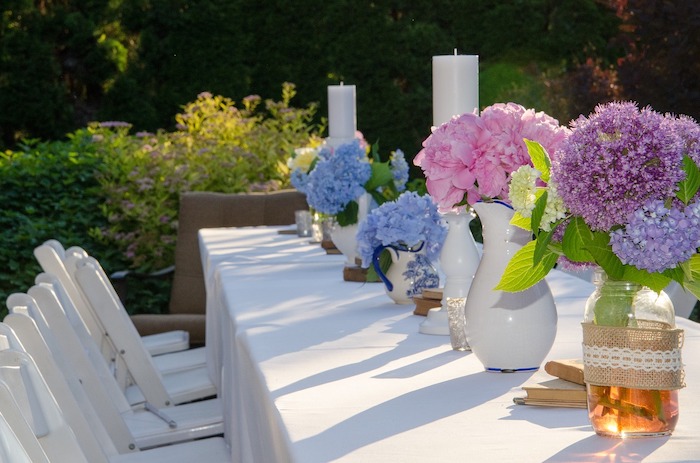
Sometimes all you need to make a budget-friendly landscape look its best is a dining area on the backyard patio. After all, it brings all your favorite people outside, and you can’t put a price on that. So enjoy a great meal, share some laughs, and enjoy the view.
Cost: You can buy outdoor patio furniture sets with a table and chairs for as little as $150-$200.
14. Rock Your Rock Garden
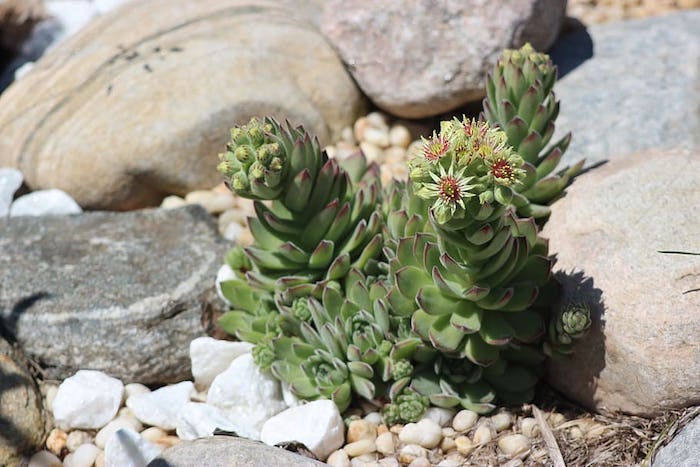
A rock garden, also known as a rockery or alpine garden, accentuates various stones, boulders, and pebbles. Small, big, gray, or brown, your rock garden will highlight many shapes, sizes, and color palettes.
Rock gardens help to diversify your yard and create an appealing contrast from the greenery. These gardens are drought-tolerant and low-maintenance, so you won’t have to spend lots of money on their care.
Cost: Landscaping rock projects cost an average of $40 to $140 per cubic yard for boulders and stones. The installation costs homeowners between $50 and $100 per hour.
Pro tip: There are plenty of ways to find free rocks for your rock garden and avoid writing that check. Large boulders on farms and construction sites are typically a nuisance. Consider asking a farmer or construction worker if they have any rocks they plan to throw away.
You may find yourself coming home with a giant, new rock. Hunting in your yard for small stones is also an excellent way to collect some of your favorites.
15. Cool Off in an Above-Ground Pool
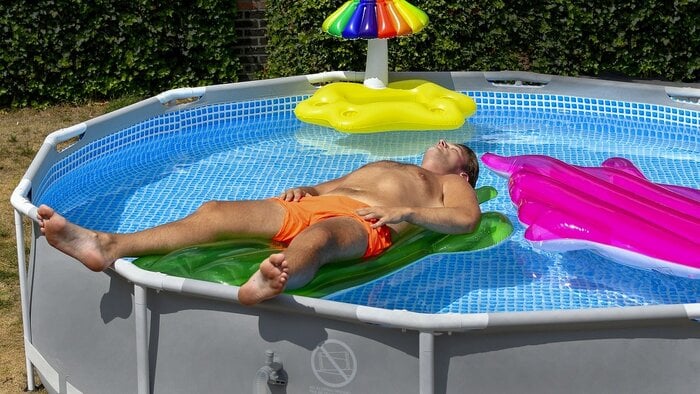
The kids want a pool, but you don’t want to break your budget, especially when you know no one will likely use the pool after the kids grow up. For a short-term solution that protects your budget and keeps the kids — and you — happy, consider installing an above-ground pool.
While you may need the checkbook for this water feature, an above-ground pool won’t cost you as much as an in-ground pool, and it will provide plenty of year-round fun.
Cost: In-ground pools typically cost between $32,408 and $60,873. Don’t worry, though: There are cheaper options, such as an above-ground pool. Typically priced between $1,700 and $5,970, the cost of an above-ground pool depends on the size and the quality of the pool you buy. Unlike in-ground pools, which can last for decades, an above-ground pool, if properly maintained, may last between seven and 15 years.
16. Grow up With a Vertical Garden
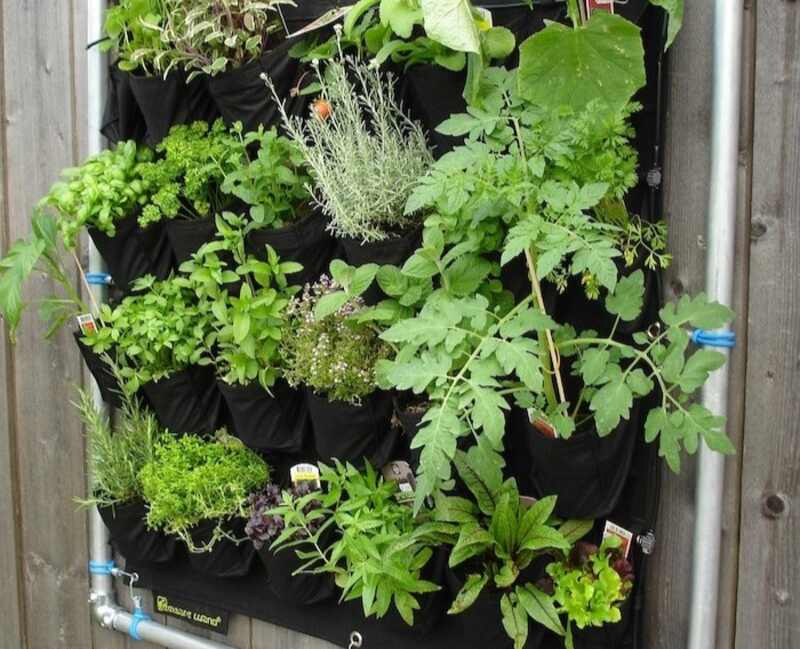
If you’re working with a budget and a small backyard, consider a vertical garden. This cheap landscape design will have you picking greens, saving greens, and growing a green thumb. These small gardens will help conserve space and make a fun, creative DIY project.
Plants that are great for vertical gardens include hostas, succulents, ferns, bromeliads, onions, garlic, tomatoes, cucumbers, and peppers.
Cost: Costs will vary depending on your DIY vertical garden’s design and whether you have the supplies already sitting in your garage or tool shed. You also will have to buy the plants or seeds for your vertical garden.
17. Sit a Spell on a Bench
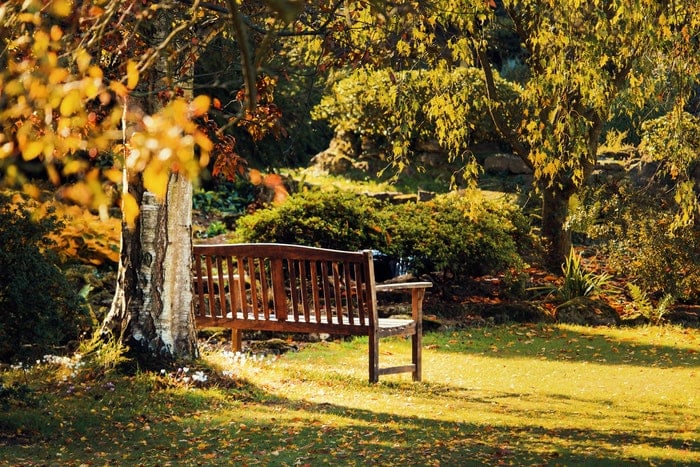
A simple park bench can turn your yard into a space for reflective thought and quiet moments. Enjoy an afternoon tea with a friend, or sit alone and meditate amid the beauty of your yard. Don’t forget to decorate your new favorite spot with pillows, flower pots, or stepping stones.
Cost: An affordable bench may cost you between $100 and $200.
18. Light The Way With Lanterns
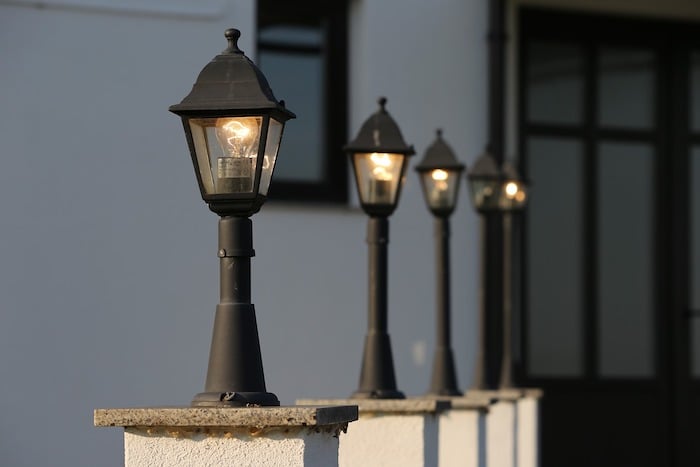
Your curb appeal needn’t disappear after that sun goes down. Install a few lamps around the yard, and you’ll add instant charm.
You can use lamps to provide light to your outdoor spaces, such as around the dining area or your reading bench. Lamps also can help guide you along a safe path, like to the front door or the garden, while also providing you with a sense of security.
Cost: Lamps are typically sold in bundles. A bundle of six or 10 lamps may cost you between $20 and $100.
19. Invite The Neighbors With a Birdbath
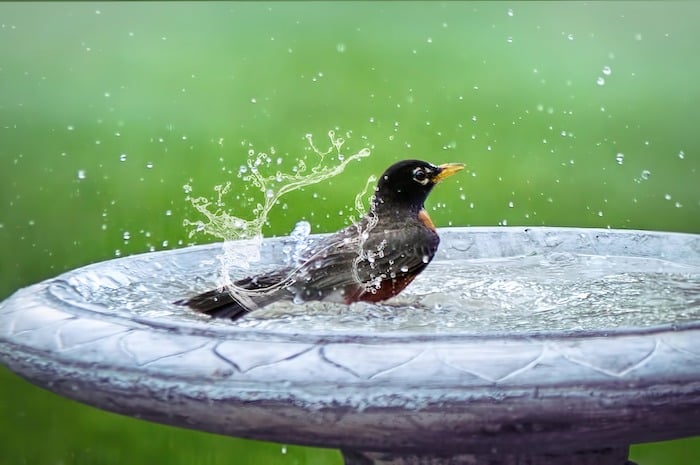
A birdbath can make a beautiful focal point while also inviting nature’s guests to your lawn. Enjoy watching the birds rinse their feathers and listening to their beautiful songs.
You won’t have to spend much time or money with this low-budget and low-maintenance landscaping feature in your backyard to appreciate the beauty it brings to your lawn.
Pro Tip: Add mosquito dunks during mosquito season to prevent your bird bath from incubating the next generation of mosquitoes.
Cost: A low-cost birdbath will typically run you between $30 and $50.
20. Repurpose Old Watering Cans
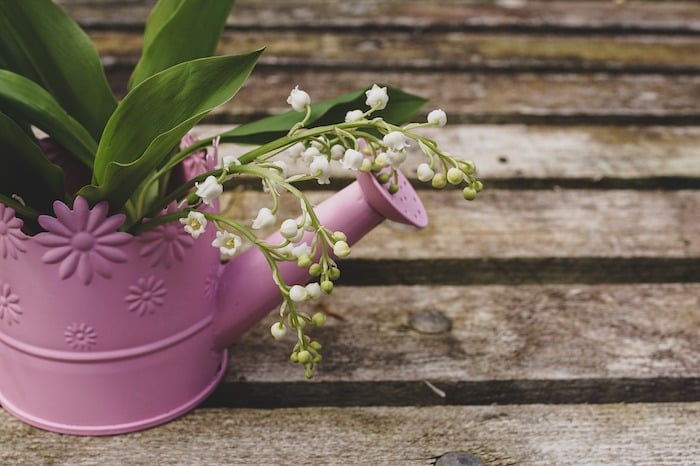
Before throwing away those old watering cans, save them for your landscape. They can make beautiful flower pots and will give your lawn a cozy aesthetic. Fill them with flowers, then place them on your front porch steps or in the garden.
Your spruced-up watering cans will have a gorgeous effect, and you’ll be glad you managed to recycle them.
Cost: The flowers will be your only buy here, costing between $10 and $30 per plant. Your old watering can shouldn’t cost you a cent.
FAQ
Is it Better to Use Rocks or Mulch Around a House?
It depends on your priorities. Landscaping rocks are more low-maintenance and cost-effective than mulch (since they don’t require constant upkeep). On the other hand, organic mulch adds nutrients to the soil and is good for soil health. If you want a low-maintenance option, go with rocks; if you’d like to improve your soil, go for mulch.
How Much Does a Landscaping Service Cost?
To maintain an existing landscape, professional landscaping services cost from $133 to $370 per month. But if you’re looking for a pro to design and install a landscape in your yard, costs can range anywhere from $4,000 to $20,317.
What is the Best Material to Fill Holes in the Yard?
To fill holes in your yard, you can use potting soil or topsoil.
When to Call a Landscaping Professional
Without proper planning, DIY projects may lead to costly mistakes, resulting in more money spent than if you had hired a professional. Many landscaping professionals market themselves as budget-friendly and are happy to help you not break the bank.
Call a landscaping professional near you if you’re interested in knowing all your options and possibly further design ideas. You may find that working with a professional landscaper makes your landscaping project stress-free and leaves you with a result you couldn’t have made yourself.
Main Image Credit: coneflowers / Joseph Yu / Pexels
